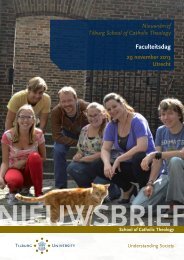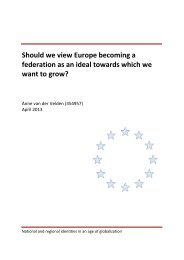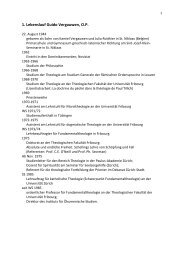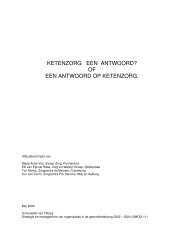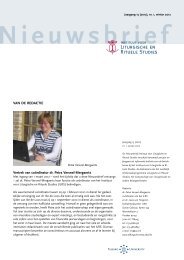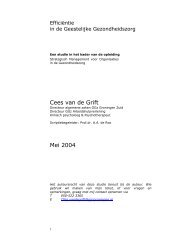Here - Tilburg University
Here - Tilburg University
Here - Tilburg University
You also want an ePaper? Increase the reach of your titles
YUMPU automatically turns print PDFs into web optimized ePapers that Google loves.
Author and presenter<br />
Mui, Phoebe; <strong>Tilburg</strong> School of Social and Behavioral Sciences<br />
Title<br />
Latent Profile Analysis:<br />
Typologies of immigrant's acculturation attitudes: Comparing theory and data.<br />
Abstract<br />
Classifying people, concepts, or other entities into categories to streamline one's<br />
thinking and perceptions, is common practice in every day life: By grouping<br />
entities the world gains structure.<br />
Also in scientific research such classification schemes are quite common:<br />
think of Durkheim's four types of suicide, Jung's psychological types, or Berry's<br />
acculturation strategies. The main advantage of such a typology is that a<br />
theoretical reference frame for further investigations is created. However, what<br />
is the value of such a theoretical typology in practice and how should one<br />
classify entities into the theoretical categories based upon the available data?<br />
Latent profile analysis [LPA] provides an initial starting point to answer these<br />
two questions. LPA can be used as a model-based clustering procedure, grouping<br />
entities based upon their similar properties. The model can be either entirely<br />
data-driven or restricted to correspond to a theoretical typology. This allows for<br />
a direct comparison between the theoretically expected typology and the<br />
prominent categories that are put forward by the data.<br />
LPA will be applied within the context of acculturation attitudes of<br />
immigrants in multicultural societies. How do immigrants typically deal with their<br />
cultural heritage and with the mainstream culture? Do they maintain their home<br />
culture, or do they adapt their cultural practice to fit in with the host culture?<br />
The most prominent account of acculturation is due to Berry. His model of<br />
acculturation consists of two dimensions: cultural maintenance and cultural<br />
change. Depending on one's relative preference along these two dimensions,<br />
four typical acculturation strategies are possible: integration, marginalization,<br />
assimilation, or separation.




